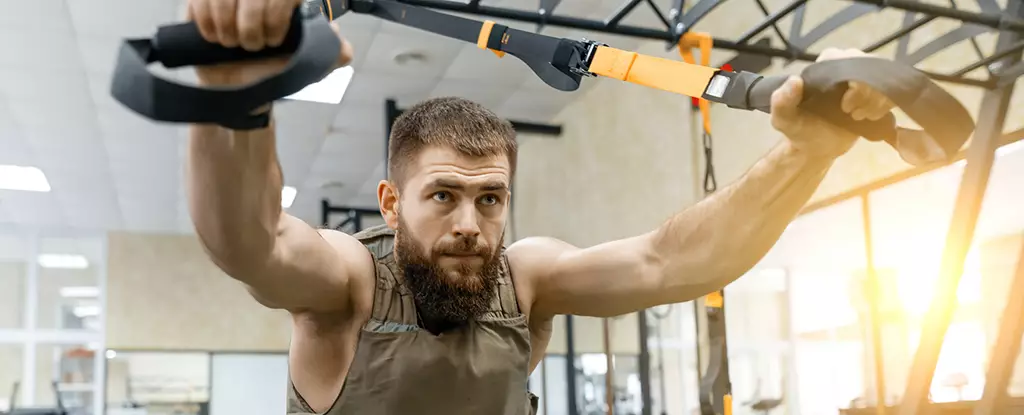As the fitness landscape evolves, the use of weighted vests is experiencing a resurgence in popularity. Social media influencers, fitness trainers, and health enthusiasts are touting the benefits of exercising while wearing these weighted garments. However, while the idea of adding extra weight to enhance physical performance is not novel—originating from practices in military training and sports—there is much to analyze regarding the safety, effectiveness, and overall value these devices bring to the fitness table.
Weighted vests have a longstanding history, often adopted by soldiers during arduous training exercises. This practice can be traced back for centuries and serves as a testament to the potential benefits of carrying additional weight during physical activity. Today’s weighted vests have evolved into more sophisticated, adjustable, and comfortable designs. As fitness trends change, so too does the methodology behind effective training techniques. The question arises: can introducing a weighted vest be a game-changer in personal fitness?
Research studies dating back to 1993 have investigated the impact of weighted vests on the elderly, demonstrating notable benefits in physical function, bone health, and general pain reduction over a structured 20-week program. However, while multiple studies have explored the physiological effects of wearing a weighted vest, it is crucial to critically assess the findings to understand the broader implications for fitness enthusiasts of all ages.
One of the central findings in research is the correlation between added weight and increased physiological stress on the body. Wearers of weighted vests exhibit elevated heart rates, enhanced oxygen uptake, and a higher rate of energy expenditure. Specifically, research suggests that a weight equivalent to 10% of an individual’s body weight can effectively maximize these benefits. However, incremental gains seem to plateau when weights hover around the 5% mark, indicating a theoretical threshold where additional weight doesn’t significantly influence performance metrics.
Moreover, a crucial aspect often overlooked is the biomechanics involved in exercise while wearing these vests. A study conducted in 2021 indicated that slight alterations in weight did not substantially affect the biomechanics of walking or running, suggesting that the risk of lower-limb injuries may not significantly increase during these activities. Nonetheless, caution must remain paramount, particularly for new practitioners or individuals without an established baseline of fitness.
Further complicating the narrative surrounding weighted vests are the mixed messages regarding injury risk. A 2018 study involving obese individuals revealed that over a quarter experienced back pain due to vest usage. This raises questions about the universality of the benefits associated with weighted vest training and how they might differ across diverse demographics.
Injury risks always exist when introducing weight into any fitness regime. The key is to adhere to principles of progression and technique to mitigate these risks. For beginners, the initial focus should gravitate towards establishing a solid physical foundation before complicating their routines with additional weights. Prioritizing methods that foster overall fitness should always be a primary concern, especially for those just embarking on a fitness journey.
Weight management and fat loss are often primary objectives for many individuals engaging in fitness training. While some studies demonstrate positive outcomes—such as greater fat loss and muscle retention when using weighted vests—this evidence is not universally applicable. Some investigations have reported negligible differences in outcomes when comparing populations utilizing weighted vests versus traditional training methods.
One significant takeaway is the recognition that different forms of exercise can yield similar or even superior benefits. For example, resistance training and other impact-focused activities, such as skipping or jumping, may stimulate bone health more effectively, presenting a compelling argument against the singular focus on weighted vests for fitness improvements.
The Value of Versatility in Training
Ultimately, the implementation of weighted vests should be regarded as one of many tools available for enhancing physical training. Alternatives such as dumbbells, resistance bands, and various forms of bodyweight training can be equally or more effective without the complexities and potential drawbacks presented by weighted vests.
Moreover, considerations for fitness levels, existing conditions, and training goals should guide one’s decision on whether weighted vests are a wise addition to their routines. Striking a harmonious balance between intensity, repetition, and load is paramount to safely pursue fitness goals.
While the renaissance of weighted vests presents an exciting opportunity for personal training regimens, it is essential to approach this method with nuance and critical thought. Understanding when and how to incorporate additional weight into exercise can unlock greater potential—provided it is done with an emphasis on safety and individual capability.

